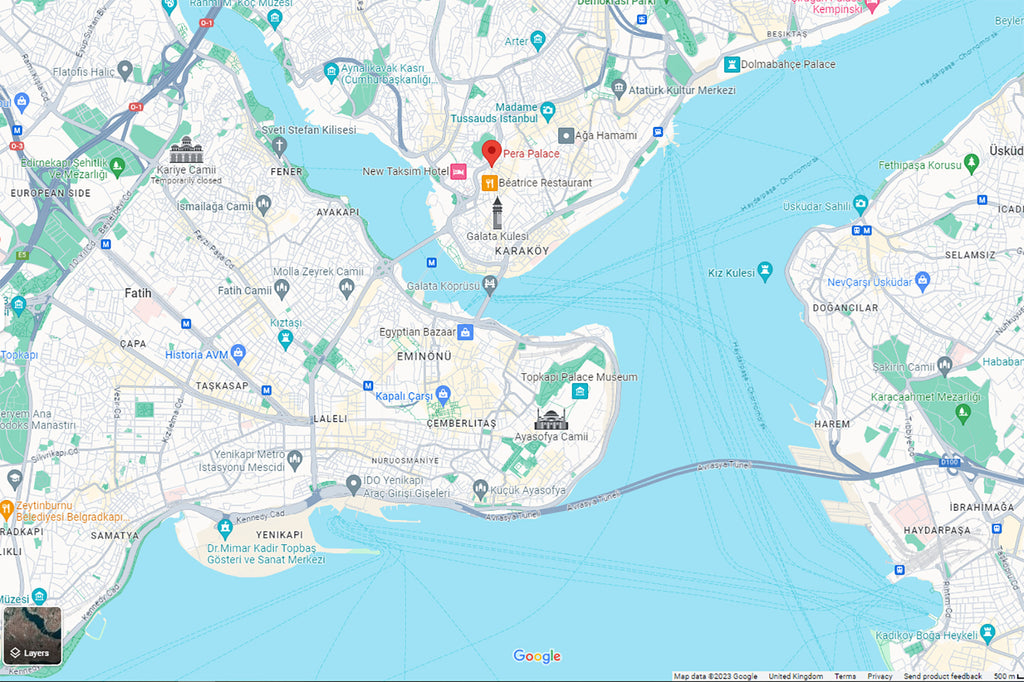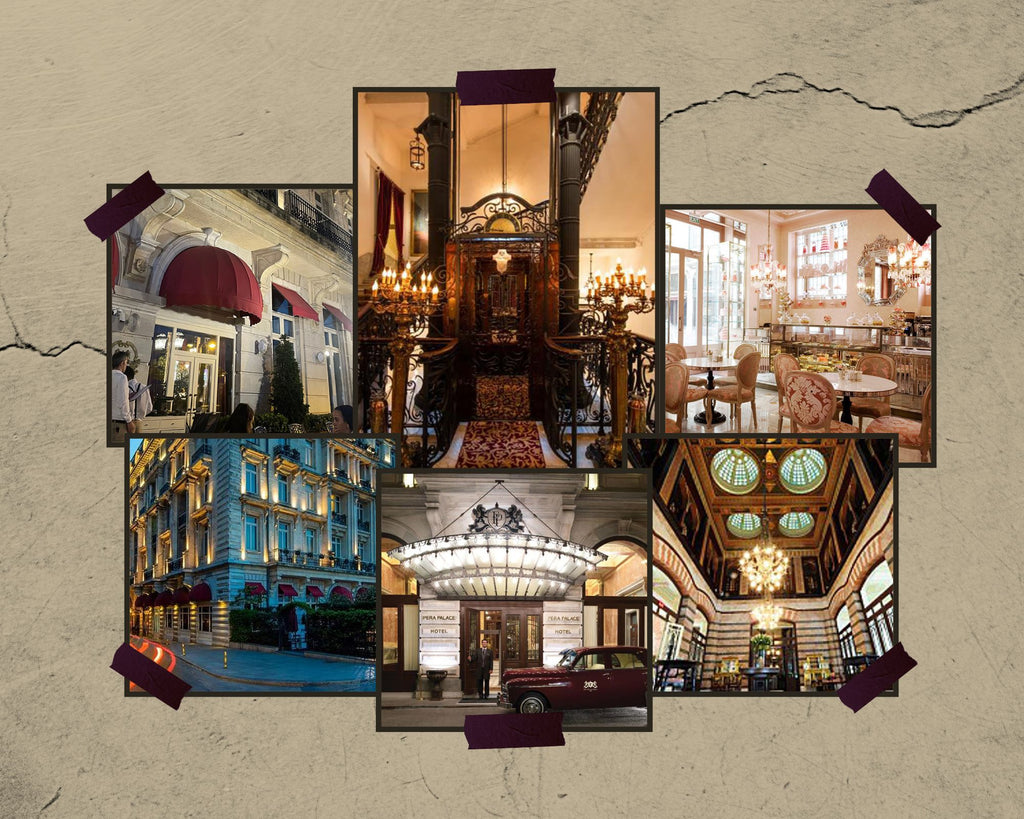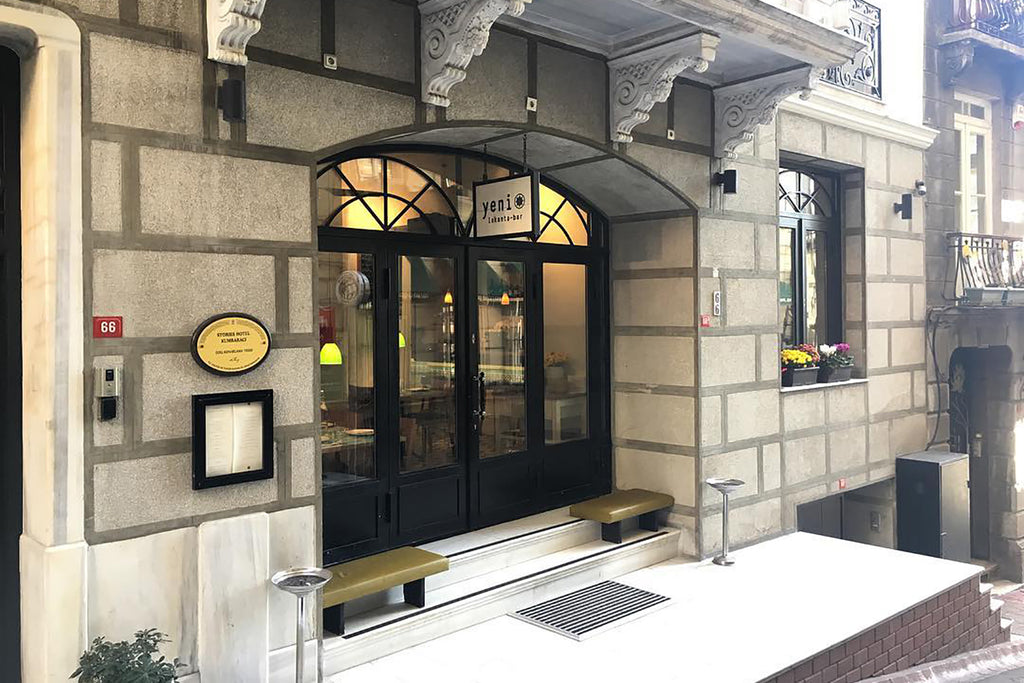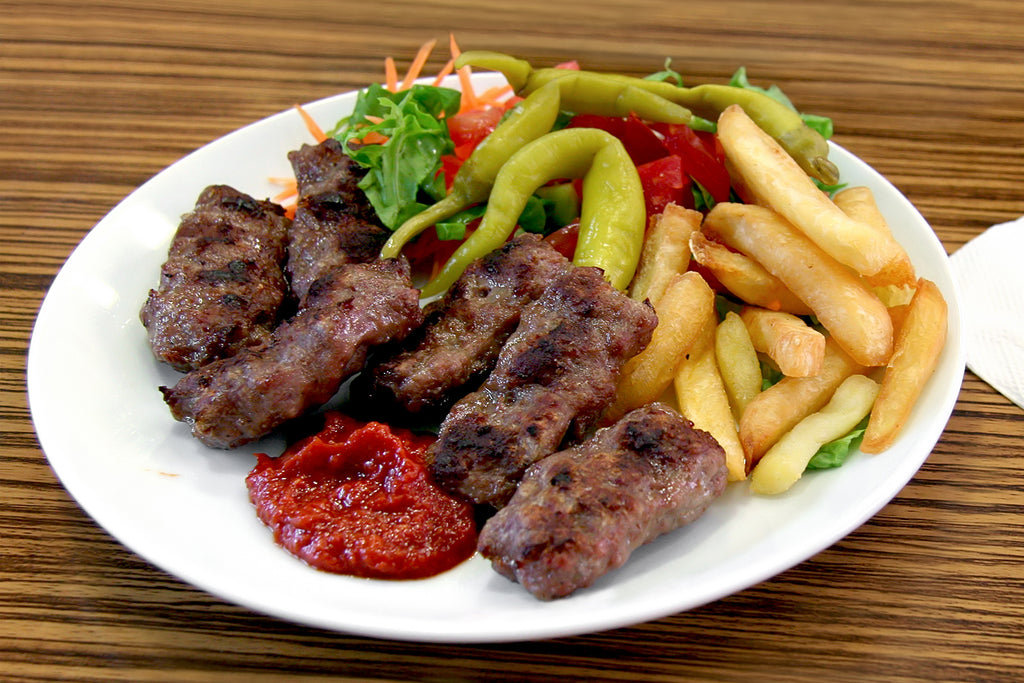Istanbul, the city where East meets West, has a magnetic charm that draws travellers from all over the world. From its stunning architecture to its bustling bazaars, the city offers a perfect blend of history, culture, and modernity. Recently, we embarked on a 4-day trip to this mesmerising city with another couple, and it was nothing short of spectacular. From flying business class to staying in a historical hotel, dining in luxurious restaurants, and exploring the city with a personal guide, every aspect of our trip was meticulously planned to ensure a memorable experience.
DAY 1
Our journey started on a high note with a BA business class flight from London Heathrow to Istanbul. The fast track and BA lounge facilities added to the luxurious experience, and the service on board the aircraft was excellent. We were served a delightful meal and complimentary drinks throughout the flight. If you're used to budget airlines, you may never go back!
Transfer
After comparing the hotel concierge and Expedia options for transfer transportation, we opted for a
private luxury car via Expedia as the hotel quoted four times more. This private air-conditioned taxi took us to our hotel in 50 minutes during rush hour.
Hotel
The Pera Palace Hotel, located in the vibrant Beyoğlu district of Istanbul, is a luxurious and historic establishment that has been serving guests since 1892. Designed by renowned architect Alexandre Vallaury, the hotel features a blend of neo-classical, art nouveau, and oriental styles. It was the first building in Turkey to be powered by electricity, and also the first to have an electric elevator. Throughout its history, the Pera Palace has hosted many famous guests, including Agatha Christie, Ernest Hemingway, and Greta Garbo. Today, the hotel continues to offer its guests a blend of timeless elegance, luxurious comfort, and modern amenities, making it one of Istanbul's most prestigious and sought-after accommodations. Picture an Istanbul version of The Ritz, complete with a classic piano backdrop during afternoon tea, an indulgent Turkish bath, and a sophisticated dining hall. That's the ambiance at Pera Palace Hotel.
Visit their website
here.
Evening Meal
Yeni Lokanta, a 10-minute walk from our hotel, is a Michelin-featured restaurant in Istanbul, celebrated for its innovative twist on traditional Turkish cuisine. Chef-owner Civan Er crafts contemporary dishes using locally sourced ingredients, with a menu that changes seasonally to reflect the freshest produce available. The stylish and modern interior creates a relaxed and comfortable dining atmosphere. During our visit, we opted for the 9-course taster menu, which is a delightful culinary journey showcasing the restaurant's creativity and commitment to quality. A dining experience at Yeni Lokanta is not to be missed for anyone passionate about food and looking to explore modern Turkish flavours. (£££££).
Visit their Michelin Guide page
here.
DAY 2
Personal Guide and Itinerary

We had the pleasure of securing the services of a private guide named Doğuş (pronounced as "Doe-ooosh, with the Instagram handle @doguscosarguler) for a two-day excursion. Prior to our arrival, we coordinated our travel plans with her via a WhatsApp call. Doğuş Coşar Güler is a driven archaeologist who is currently pursuing a Ph.D. in Classical Archaeology at Mimar Sinan Fine Arts University. She possesses a Bachelor's degree in Classical Archaeology and Latin Language & Literature from Istanbul University and a Master's degree in Classical Archaeology from Mimar Sinan Fine Arts University. In addition to her academic pursuits, she is actively involved in teaching subjects such as Archaeology, Museology, Iconography, and Mythology at Istanbul Topkapi University within the Tourism Guidance Department as a lecturer. Her deep commitment to her field and impressive academic achievements underscore her genuine passion for unravelling the mysteries of ancient civilizations. In her spare time, she also serves as an official guide, further affirming her exceptional qualifications!

We started our day at 8:30 am, grabbing a coffee and simit en-route for breakfast. Simit is a popular Turkish street food, resembling a cross between a bagel and a pretzel, made of braided dough encrusted with sesame seeds and baked until crispy and golden brown. We met Doğuş outside the Egyptian Spice Bazaar. The walk there took us via Galata Tower (we nicknamed this Fat Tower), and across the Galata Bridge, which crosses the Golden Horn. The bridge was littered with fishermen dangling their rods over the side of the bridge, and we witnessed Balik Ekmek (Fish Sandwiches) being made fresh from ornately decorated boats bobbing about on the water's edge.
Egyptian Bazaar

The Spice Bazaar, also known as the Egyptian Bazaar, is one of Istanbul's most famous and historic markets. Located in the Eminönü quarter of the Fatih district, it is the second largest covered shopping complex after the Grand Bazaar. Today, the bazaar is a bustling market and a popular tourist destination, offering a wide variety of goods, including spices, sweets, dried fruits, nuts, and other delicacies. The vibrant colours, intoxicating aromas, and bustling atmosphere make it a must-visit attraction for anyone visiting Istanbul. Visit their website for more information here.

Turkish Coffee
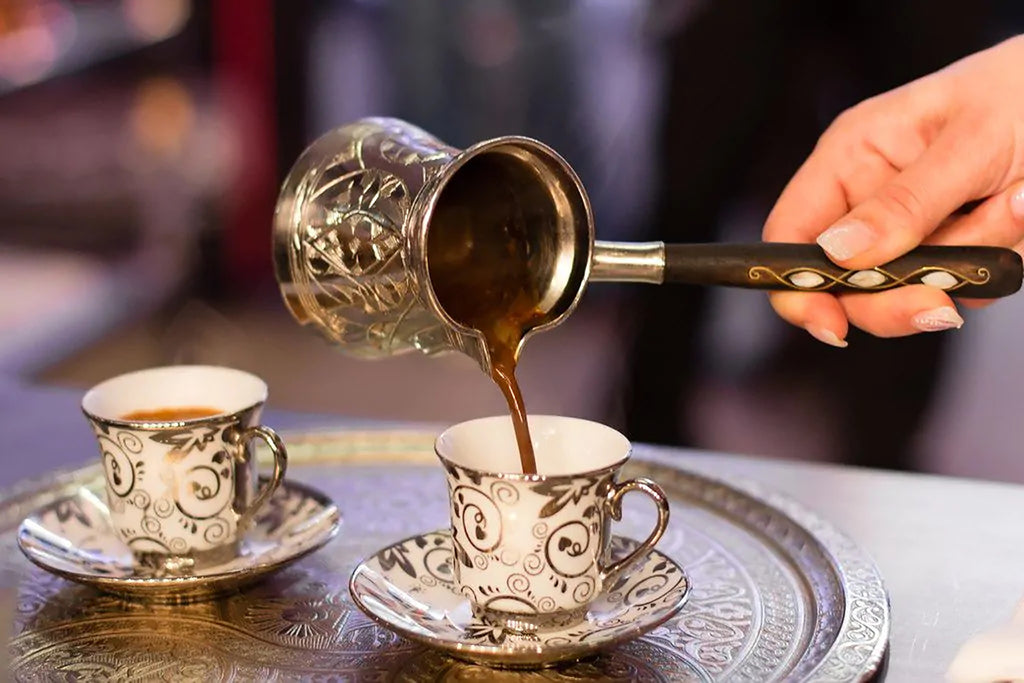
Next, we stopped for Turkish coffee and learned about the coffee culture in Turkey. Turkish coffee is served in small cups and is often accompanied by a fortune-telling tradition using the coffee grounds left at the bottom of the cup. Interestingly, there is also a tradition of adding salt, not sugar, to coffee to test one's future husband!
Rustem Pasha Mosque

The Rüstem Pasha Mosque is a hidden gem designed by the famous Ottoman architect Mimar Sinan and was completed in 1563. The mosque is renowned for its stunning interior, which is adorned with some of the most beautiful İznik tiles ever produced, featuring intricate floral and geometric designs in a dazzling array of colours. Despite its somewhat hidden location and smaller size compared to other mosques in Istanbul, the Rüstem Pasha Mosque is considered one of the city's architectural masterpieces and is a must-visit for anyone interested in Ottoman architecture and design.
Bosphorus Boat Cruise

Taking the Bosphorus boat cruise was an unforgettable experience during our trip to Istanbul. The journey began at the Golden Horn and continued along the Bosphorus strait, the natural boundary between Europe and Asia. As the boat sailed along the water, we were mesmerised by the view of Istanbul's most iconic landmarks. The grandeur of the Dolmabahçe and Çırağan Palaces, the imposing Rumeli Fortress, and the famous Bosphorus Bridge were sights to behold. The picturesque Ortaköy Mosque and the opulent 'yalı', seaside residences, were also stunning. From a distance, we could also see the Hagia Sophia, Topkapi Palace, Maiden Tower, and Galata Tower. The surrounding hills and parks added to the natural beauty of the scenery. This cruise not only offered a visual treat but also provided insight into Istanbul's rich history and strategic geographical position. It was truly a unique way to explore the city and appreciate its blend of natural beauty and architectural wonders.
Lunch
On the recommendation of Doğuş, we had lunch at Kanaat Lokantasi, on the Asian side, a renowned restaurant cherished by both locals and tourists. From the moment we stepped inside, we were embraced by its warm and inviting atmosphere. The buffet-style spread featured a vast array of traditional Turkish dishes, each one as delicious as the next. We were particularly impressed by the variety of vegetarian and meat dishes and generous portions. The staff were exceptionally friendly and attentive, enhancing our dining experience. We also found the restaurant to offer great value for money, which was a pleasant surprise given the high quality of the food and service. This delightful local restaurant allowed us to immerse ourselves in authentic Turkish cuisine in a truly comfortable and welcoming setting. (£)
Dolmabahce Palace

After a tasty lunch, we took a local ferry across the Bosphorus to visit Dolmabahce Palace. The name Dolmabahçe means "Filled Garden" in Turkish, and it tells an interesting story. The palace is situated on what was once a small bay along the Bosphorus, which was gradually filled over time to create a large imperial garden, giving the palace its name. The construction of Dolmabahce Palace was motivated by a desire to showcase opulence and downplay the Ottoman Empire's declining stature. While exploring the palace, we admired its blend of architectural styles, including Baroque, Rococo, Neo-Classic, and Ottoman influences, all adorned with an impressive 14 tons of gold leaf. One remarkable feature is the world's largest collection of Bohemian and Baccarat crystal chandeliers. Mustafa Kemal Atatürk, the founder of the Turkish Republic, used the palace as his summer residence and implemented significant reforms, such as introducing a new alphabet. His legacy lives on within the palace, where he spent his final moments, passing away on November 10, 1938, at exactly 09:05. To honour this moment, all the clocks in the palace are frozen at that time, and we saw the room where he passed away during the tour, offering a glimpse into this important chapter of history.
Evening Meal

We took a taxi back to
360 Istanbul for a rooftop cocktail with amazing views as the name suggests and then had dinner at
Zeytinli Restaurant. The restaurant, located in a bustling area, offered great service, fresh fish and meze, and the local drink called raki. We ended the night with a quick nightcap back at the hotel's orient bar. (££)
DAY 3
Sultan Ahmet District
Basilica Cistern

After meeting our guide outside the Spice Bazaar again, we strolled through the serene Gulhane Park en route to the magnificent Basilica Cistern.
With our guide's priority access, we were quickly ushered to the front of the queue. A marvel of ancient engineering, this underground water reservoir was constructed in the 6th century by Byzantine Emperor Justinian I to provide water to the Great Palace and surrounding edifices. Capable of holding an impressive 80,000 cubic meters of water, the cistern is supported by 336 marble columns, each towering 9 meters high and arranged in 12 rows of 28 columns. The intricately carved designs on some columns and the fact that others were repurposed from previous structures only adds to the awe-inspiring atmosphere. The age-old myths and tales associated with the two Medusa heads are captivating!
Hippodrome

Only a few minutes away is the Hippodrome of Constantinople, often mistaken for a large public square! This used to be the epicentre of social, political, and athletic events in the Byzantine Empire. Originally constructed in the 3rd century, it could hold up to 100,000 spectators, hosting chariot races, gladiatorial contests, and various public entertainment. Now, only a handful of artifacts, including the Serpentine Column and the Obelisk of Theodosius, remain, standing as testaments to the historic site's once magnificent and important past.
Blue Mosque

A stone throw away and we stepped into the courtyard of the Blue Mosque, officially known as the Sultan Ahmed Mosque. We were immediately struck by its grandeur and beauty. It's called the Blue Mosque because of the 20,000 hand-painted blue tiles that adorn its interior walls. As we ventured inside, we were mesmerised by the intricate designs and the sense of tranquillity that envelops the mosque.
The mosque's interior is illuminated by over 200 stained glass windows and numerous chandeliers. Interestingly, ostrich eggs are placed on the chandeliers to deter spiders and prevent the formation of cobwebs inside the mosque. The Sultanahmet Mosque, unique in Istanbul for having six minarets, sparked controversy, as this was a distinction reserved for the Prophet's mosque in Mecca. Legend has it that this resulted from a misunderstanding between the sultan and his architect: the sultan requested 'altın minare' (golden minarets), but the architect heard 'altı minare' (six minarets). Another version suggests the architect found gold too expensive and opted for six minarets instead. Ultimately, the sultan resolved the issue by funding a seventh minaret in Mecca.
Despite being a major tourist attraction, it's still a working mosque and we were ushered out before the daily prayers commenced.
Lunch
For lunch, we dined at Sultanahmet Köftecisi, a famous restaurant known for its delicious meatballs and traditional Turkish dishes. (££)
Topkapi Palace

The afternoon was spent exploring the Topkapi Palace. The palace, once the heart of the Ottoman Empire, is a sprawling complex filled with stunning courtyards, elaborately decorated rooms, and treasures from different eras and regions. The Imperial Treasury was impressive, housing a collection of priceless items, including the famous Topkapi Dagger and the 86-carat Spoon maker's Diamond. The palace grounds also offer breathtaking views of the Bosphorus. A visit to Topkapi Palace is like stepping back in time and getting a glimpse of the opulence and grandeur of the Ottoman era.
Hagia Sophia
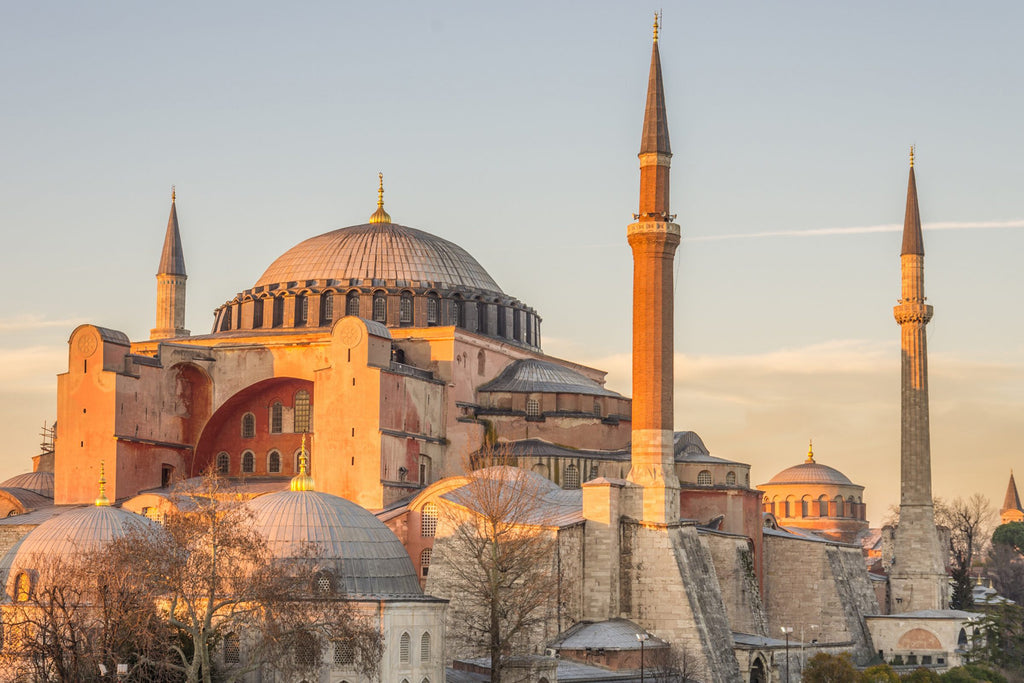
We planned to visit the Hagia Sophia (Hagia Sophia), but the queues were too long, and we ran out of time! However, we had the opportunity to see the exterior that was impressive. The mosque, with its massive dome and towering minarets, is an architectural marvel that represents the city's rich history, having served as a cathedral, mosque, and museum over the centuries. The square surrounding the mosque was bustling with tourists and locals alike, and the atmosphere was vibrant and energetic. While I'm disappointed that we didn't get to see the inside, the exterior alone was worth the visit, and it's the excuse we need to return one day to explore the mosque in its entirety.
Evening Meal
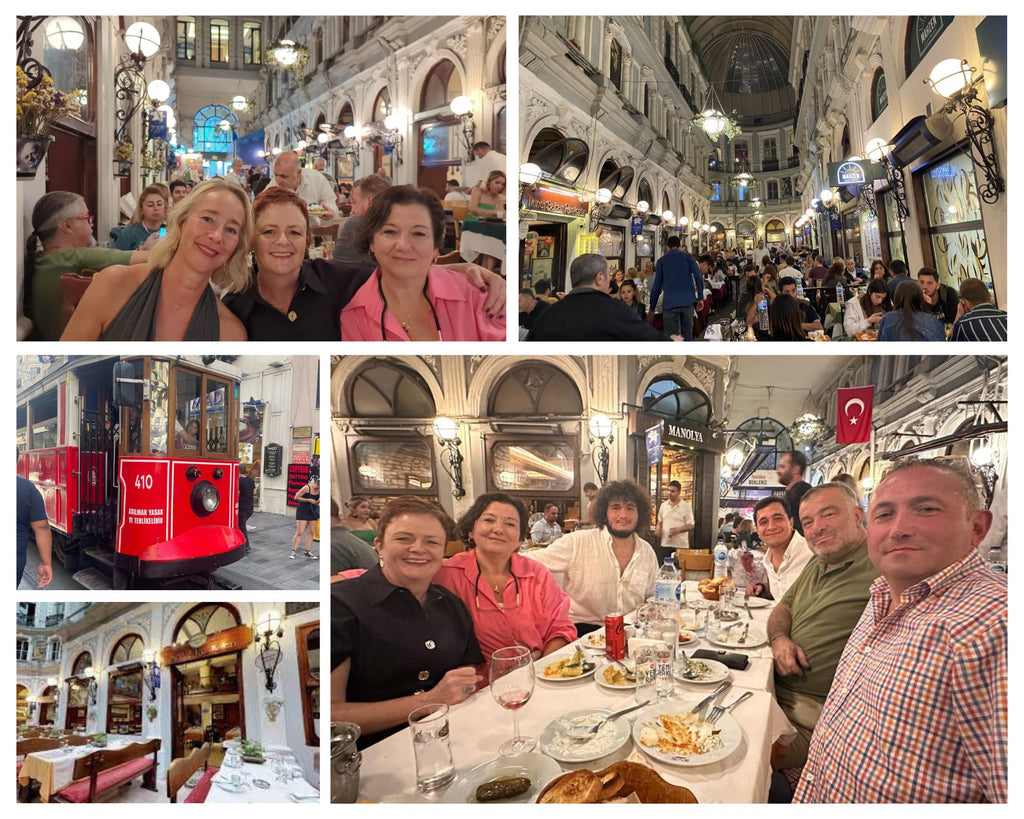
During our evening in Istanbul, we had a delightful dinner with family at the Sevic restaurant, located in the historic Cicek Passage. This is in the Beyoğlu district where you can see traditional trams down the high street. This iconic passage is home to a variety of cafes, bars, and restaurants, creating a lively and bustling atmosphere. At Sevic, we enjoyed a fantastic array of traditional Turkish dishes, a true culinary treat. Adding to the overall ambience of the evening, we were entertained by various musicians who serenaded us throughout our meal. It was a memorable evening spent enjoying great food, music, and company in a beautiful historic setting. (£££)
DAY 4

Day 4 started off with a relaxed morning before we headed for brunch at Guney Restaurant, conveniently located next to the iconic Galata Tower (££). Situated in the Galata quarter of Istanbul, the Galata Tower, also recognised as the Galata Kulesi Museum, stands as an emblematic symbol. As one of the world's most ancient towers and a defining symbol of Istanbul, Galata Tower earned its place on the UNESCO World Heritage Temporary List in 2013. Historically significant to Istanbul's skyline, this tower once served as a crucial fire watchtower and was colloquially termed the Galata Fire Tower. Although we didn't do this, you can climb to the top for a 360 view of Istanbul.
Galata Port

Following a delicious meal, we took a leisurely 20-minute walk to Galata Port, a dynamic waterfront area that has been transformed into a vibrant hub of cultural, gastronomic, and leisurely activities, hosting a range of galleries, boutiques, cafes, and restaurants.
Balat
From there, we hopped into a taxi for a quick 15-minute ride to Balat, a historical neighbourhood known for its colourful houses and diverse community. Balat has an eclectic mix of cultures and architecture, making it a unique and fascinating area to explore. In Balat, we also visited the Church of Saint George, a beautiful piece of religious architecture with a rich history. Note: no alcohol is served in this area!
Evening

For dinner, we visited Mesai, a restaurant that came highly recommended by the hotel concierge. Mesai boasts an elegant atmosphere with modern, artistic decor. The menu is a creative take on traditional Turkish dishes, using fresh and high-quality ingredients. Each dish was a delightful surprise, offering a mix of flavours and textures that kept us coming back for more. It was a perfect end to our last night exploring the many treasures of Istanbul. (££££)
DAY 5
Homeward Bound
Grand Bazaar

We checked out of our hotel at 9:30am and left our luggage at the reception before hopping into a taxi to the Grand Bazaar. The taxi ride was about 15 minutes from the hotel. After having a quick breakfast, we visited the Grand Bazaar from 10 am to 12 pm to avoid the crowds.
This historic market is a labyrinth of over 4,000 shops spread across 61 covered streets, teeming with a kaleidoscope of colours, scents, and sounds. From intricately designed Turkish carpets, vibrant ceramics, and shimmering textiles to sparkling jewellery, aromatic spices, and unique souvenirs - the bazaar is a treasure trove of wonders. We spent the morning exploring the different sections of the bazaar and doing some shopping. Haggling is a common practice in the bazaar, and it was fun to negotiate prices with the vendors. We bought some beautiful Turkish delight, and spices to take back home. Shopkeepers were warm and engaging, often ready to offer a cup of tea or a sample of turlish delight.
After a brief coffee stop we went back to the hotel to retrieve our luggage and start our journey home
Return Flight

We ordered a private transfer from the hotel to the airport. Istanbul Airport is incredibly modern and efficient, with a vast array of amenities, shopping, and dining options. Despite its size and the volume of passengers it handles, the airport is well organised, making navigation relatively easy. Interestingly, we noticed many people at the airport returning to the UK after having cosmetic surgery or hair transplants, which seems to be a common practice given the cost advantages and the expertise available in Turkey.
Hints and Tips

*Visiting museums or places of interest are chargeable but there’s one price for locals and up to 5 times more for tourists!!!!!!!!!
*Throughout our holiday, we used an app called Split Wise. This app was a lifesaver as it helped us keep track of all our expenses and split the bills easily at the end of the trip. Highly recommended for group travel!
*The weather was hot (30 degrees) so we took light linen clothing, trousers, skirts, shorts and vest tops. Evenings were also warm but windy.
*Be prepared to walk a lot and wear comfortable shoes. There are lots of cobbled streets so very high heels should be avoided.
*Women should take a scarf with them in case of visiting a mosque and legs should be covered. If not, then most mosques provide scarfs and elasticated skirts to wear.
*Its free to visit a mosque but during prayer time, visiting is not allowed. Avoid visiting mosques on a Friday as this is their religious day and very busy!
* The sale of alcohol near a mosque is prohibited and also in some very religious areas.
*Taxis are very difficult to find and sometimes they don’t take you if the journey is deemed to be too short or “not worth it” for the driver. Make sure the meter is turned on once you start your journey.
*Expect it to be busy, noisy and lots of traffic. It's not a relaxing holiday!
*If you plan to take public transport it is worth getting an Istanbul Card. Visit this
link.
*Plan your itinerary and book restaurants before you go to make the most out of your stay.
*In hind sight we probably should have done a sightseeing day and then a more chilled day before hitting the sights again as it was very tiring.
*Note: The Grand Bazaar is closed on Sunday


